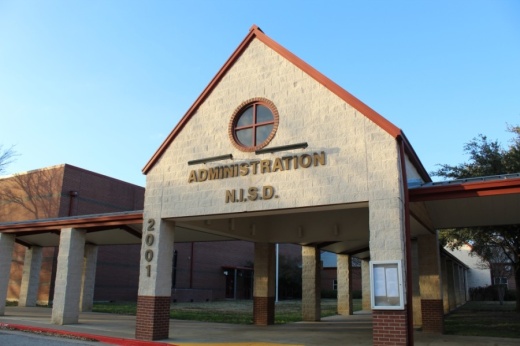NISD Superintendent Ryder Warren said during an April 12 board of trustees meeting that the district expects the vast majority of students to in-person learning next year, but the district still needs to account for those who want or need to learn remotely.
“We certainly believe that in-person learning, that face-to-face learning, is so critical for the vast majority of our students for both meeting their academic needs and also meeting their social and emotional learning needs,” said Michael Griffin, NISD assistant superintendent for curriculum and instruction. “But we do recognize that we have some students who have thrived in remote learning and others who may have a need to continue to work from home based on medical needs.”
During the meeting, Griffin outlined three funding scenarios that might affect how the district moves forward, taking into account budget constraints and logistics.
Two of those scenarios rely on funding being released to districts for remote learning by the Legislature and the Texas Education Agency.
“We need the state to tell us what their culture’s going to be on this because we’ve been asking them for months," Warren said, adding that the TEA has advised school districts to make tentative plans for state-funded remote learning next year.
Griffin also presented a third scenario in which school districts are not given any additional funding.
“Then, we will have to determine as a district: Will we be able to offer remote learning, and if we do, what would that look like?” Griffin said.
Griffin presented several models for remote learning based on discussions with principals and district leadership. She said the district is considering keeping a synchronous remote learning program in place primarily for older students. Students in second grade and below would not be included in the program, but the district could choose to make the cutoff somewhere between third and sixth grade.
“We just really believe that our pre-K through second-grade students need in-person,” Griffin said. “[They need to be] building those fundamental skills side by side with their teacher, learning from their peers.”
Under each of these models, the program would be limited to 150 elementary-age students per grade level and 180 students per middle and high school grade level. Priority would be given to students with medical needs. Depending on the number of elementary school students included, the program might require 20 high school teachers, 16 middle school teachers and 5 to 18 elementary school teachers, according to the presentation.
In another possible model for next year, the district could choose not to offer a remote learning program similar to the one that is currently available to all students continue to offer homebound services to students with serious medical needs, Griffin said. Unrelated to pandemic precautions, the district has offered and currently offers personal, at-home teaching to students who qualify based on medical needs or disabilities.
Warren said that the biggest cost of a remote program would be personnel. Under current budget constraints related to Texas House Bill 3, the district would be able to fund a full remote learning program without assistance. Further decisions by the district would rely on what is decided at the state level.
“If there was no hope of state funding or federal funding, it’d be a moot point,” he said. “But there’s still hope out there that there will be funding provided.”





